If you watched any of the Tour de France this summer, you probably heard the commentators and on screen graphics showing ‘Watts’, and if you went ‘What?” – this this post is for you. As part of laying the groundwork for an upcoming review, I’m going to attempt to cover all the basics for what cycling with power is all about. I’ve divided it into a bunch of major sections to make it easier to consume. If you’ve been training with power for a while, you’ll likely realize this is barely scratching the surface of the topic. The science and level of detail that folks who heavily train with power go into is pretty incredible, so my goal here is to bubble it all up at the simplest possible level. In the future we’ll dive into more detail.
Why: What does power give you?
Power output is measured in watts (w) and is simply how much work you are outputting while on the bike. Power is only really applicable to cycling – not running or swimming. You know those bikes you sometimes see at the gym that have the little meter that tells you how much wattage you’re generating? Some even self-power the bike – that’s power output. On your regular bike though that energy (power) is expended into moving you somewhere (like…down the road).
One of the challenges with heart rate training is that it doesn’t give one a complete picture of what’s going on in a given training/racing ride. For example – a heart rate file with speed/cadence/altitude/etc, doesn’t show the effect of going into the wind. Nor does it show how much true effort your expending to get to X MPH. It simply says your body is reacting with Y heart rate. Many things can affect your heart rate on any given day – sleep, temperature, stress and nutrition for example. By adding power into the puzzle pieces, you can get a better idea of the overall stress being incurred by the cyclist.
Where: Understanding the major power tests
When folks talk about power, they might say “Oh, Jonny Doe can crush 758w”, like measuring fish stories (or something else…). But the reality is that without knowing how long Jonny can go 758w, it means nothing. I can crush 758w too – for a short period of time. A more realistic measurement though is to determine your functional threshold power (FTP).
In order to start training with power, you need to establish baselines to understand where you currently stand. This is done via one of a couple of different testing methodologies, but the basics are that you warm up, and go through a series of timed tests. Some of the methodologies use shorter tests (sets of 5-seconds to 20 minutes), and some are longer (60 minutes). But one trait is common across all tests: It’s balls to the wall. It’s an all out effort.
Based on these tests you get your FTP. Your FTP is basically your personal breaking point that you established for the tests based on how long you could maintain that effort for one hour. This is the maximum power output you can sustain for that time period. So say you have an FTP of 250w for 60 minutes. This means that if you want to go 120 minutes, you’d ride at an effort some percentage lower than 250w – such as 210w. And the inverse is true, if you’re doing a 10-mile sprint race, you may ride at 110-120% of FTP – or 275-290w.
In conjunction with this you can also start to develop more detail around a concept called TSS – Training Stress Score. This allows you to track and trend your training effort based on how you are performing. Of course, there are a ton of different detailed ways that you can start diving into this power training – with more acronyms than you can imagine: TSS, IS, IF, NP, MMP, CP and VI to name a few…
Now, this gives you wattages to start basing your training and racing on. But, how do you compare them to other people?
When: Is little chica more powerful than big clydesdale?
One of the things that raw wattage numbers don’t tell you is how much weight had to be moved to generate those watts. A 210 pound clydesdale cyclists (we’ll call him Horseman) will have to generate more watts than a 115 pound female cyclist to maintain the same speed on a climb.
So how do we compare these? We use the international metric of watts per kilogram. This simple equation takes your watts and divides it by your weight in kilos to produce a standard and comparable metric that’s used across cycling. This means you can also compare it objectively to your favorite Tour de France pro…or your girlfriend.
So let’s start with a semi-random example:
Me.
I’m 166 pounds, which when converted to kilos (divide by 2.2) I’m 75 kilos (well, 75.4545454454). For all you folks in the metric system already, you can skip this step.
Next, we take your FTP number. Let’s just assume that’s 275w to make things simple (despite having 18 months of CompuTrainer data, I actually don’t have an FTP established yet since all my workouts never really went for ‘go as hard as possible for long’, so 275w is a semi-random shot in the dark). Anyway…back to the calculation:
275w / 75.45kg = 3.64 W/KG
This means that my k/w output for my 60 minute FTP is 3.64 WKG (watts per kilogram).
Let’s quickly do the math for two other fictional peoples to put it all in perspective:
| Me | Horseman | Chica | |
| Weight (Lbs) | 166 | 210 | 115 |
| Weight (Kilos) | 75.45 | 95.45 | 52.27 |
| FTP (watts) | 275 | 347 | 190.5 |
| Watts/Kilo (WKG) | 3.64 | 3.64 | 3.64 |
See – from above we can see that in this picture all three cyclists are all equal. So while Mr. Horseman will go around with his 347w bravado – it doesn’t mean he’s going to beat Little Chica. In fact, she’ll be right there leading the way up the hill. As for me…I’ll have taken the high road and stopped to get ice cream.
What: The devices
So, now comes the bad part. Getting power data is expensive. This is one of those industries that has somehow managed to stay above all logical pricing models and prices have stayed incredibly high (though down from what they used to be). I don’t foresee any drop in prices unless a major corporate player like Garmin gets in the game to offer a device. Otherwise, they are all relatively small companies.
I’m going to try and round up the five major models on the market today in as small a section as possible. Each one of these vendors has a few different models that add/remove features (generally aimed at Pro’s), so I’ll focus on the cheapest models out there. Almost all of these devices utilize strain gauges to determine much power is being generated, or they use math to determine power output.
Lastly, all of the power units must connect to a ‘head’ unit – or a display on the handlebar. There are a few units out there that can wirelessly accept power data (via ANT+) from most of the below – they are the Garmin Forerunner 310XT, Garmin Edge 705, and iBike. Whereas some of the units require specific head units (like the Polar requiring Polar Watches).
I’ve created nifty little MSPaint drawings of where all the devices go, to make it super-simple to understand.
SRM: SRM is the original and gold standard in the power industry world. They measure power at the crank and crank spider on the bike (circled below). They are used by many on the tour, as well as more recreational folks (comparatively). They work with ANT+ head units, as well as with their own head unit. Their devices start at $2,200 – though that doesn’t include a head unit (add at least another $400-500+ for that, via Garmin 705/310XT). But, you can find some package deals out there for less than $2,000 for the unit itself.
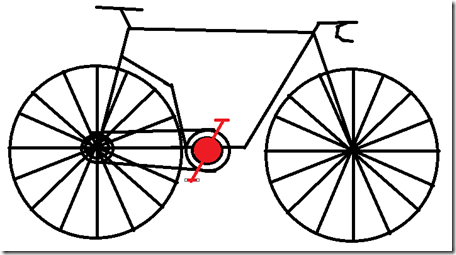
Quarq: Quarq is a relative newcomer to the field, just a few years old – but they are quickly gaining popularity and respect in the field. Team Cervelo used them this year in the tour for example, as do many other pros – like Triathlete Ben Collins. The CinQo (Quarq’s product name) measures its power output at the chainring (front rings) – in a similar location to the SRM. They require an ANT+ head from Garmin (705 or 310XT) or an iBike, and depending on which cranks you have – you may have to pick up new cranks. But, they are a bit cheaper than SRM at $1,495 (+$300 for cranks if not compatible).
On a bike, their product is installed on the chain ring itself, as pictured below in red:
PowerTap: If you’re a triathlete, you’re probably most familiar with PowerTap. Within the tri world they are probably the most used – primarily due to price. PowerTap is manufactured by Saris. They came into the scene earlier this decade and really shook things up with their cheaper-than-SRM model. Instead of measuring near the cranks, they measure in the rear wheel hub. This means there is a tiny loss of watts in the drive train (it takes ‘power’ to spin your chain), usually 5-15w. But that’s a known quantity. PowerTaps start at $600 for a wired model, and $995 for a wireless model. They also link up to ANT+ devices as well, like the 310XT and 705. As a quick side note, they are the only vendor to offer a free trial/demo program with local bike shops, which is kinda cool.
On the below ‘diagram’, you can see where the PowerTap is located.
iBike: iBike is the low cost alternative in the power world. They measure things in an entirely different way, using airspeeds, altimeters and cadence sensors to determine power output. So instead of measuring actual power output directly, they calculate it using a bunch of other known data points. This has pro’s and con’s (incredible for perfecting aero-form in the wind, not as ideal for indoors on a trainer without additional accessories). But, the big pro is that they start at $199, and $429 for a model where you can save your data for later. There is a fair bit of debate in the cycling world as to the standalone value of the iBike in serious power training situations (due to variability), however there is little debate that an iBike coupled with any of the other power meters above gives one a huge amount of very valuable data. The below diagram shows the iBike head unit on the handlebar, and the wind and cadence sensors.
Polar: Polar dipped its toe into the market a few years back, but otherwise isn’t really innovating on the product. They measure power using chain tension and chain speed to determine power output. The main target audience of their product was if you already had a Polar Heart Rate monitor (specific ones), and thus was priced more in line with an expensive accessory for it. However, common complaints are around it’s lack of a wireless model and messy wiring susceptible to breaking. That said – at $300 it’s priced quite well. Below you can see where they measure the output, using a device near the chain stay.
Ergomo: I should at least mention them – they created a power meter for a while, but the company has since gone under. It measured power at the bottom bracket and was (well, still is) fairly cheap at about $550 for just the bottom bracket, but you still need a head unit – so realistically you were looking at about $1,800. But support for it appears to be non-existent at this point given the company is basically gone. Here’s a picture of where they measured their power at:
Finally, I do want to mention one other power measuring option…
CompuTrainer: This one you can’t take with you to a race, or really out your front door. Made by RacerMate, this trainer sits inside your house. But the CompuTrainer can measure power output – as well as generate resistance in the form of watts. It’s unparalleled in what types of training it can generate, but only if you’re indoors on it. Priced at $1,500, it’s in line with other power meter devices. I did a full review on it this past winter. And just because I’ve already created a ton of these little Paint drawings, why not one more?
So that’s the quick wrap-up on devices. There’s a ton of very tiny details in there – especially with how different manufacturers like their products to be portrayed. So if I’ve incorrectly articulated a detail, I’ll be happy to fix it.
Who: Should you plunk down the cash?
So, you’ve gotten this far – now you might be wondering if getting a power meter is right for you. That, or you decided long ago it wasn’t for you and are still reading because you like to read. ;)
Power meters are no doubt an expensive training tool. Some tools (or toys as it may be) that triathletes can buy will make them faster. For example, if you buy a new pair of race wheels (i.e. Zipps), there’s a very quantifiable (and fairly well known) time savings per specified distance that you can get. Same with aero helmets and other similar pieces of equipment. Like an ATM machine of speed.
But a power meter isn’t like that. It can make you faster – and will – but you still have to do the work. Simply riding with a screen that says you’re generating 221w as you go along won’t get you any closer to the podium or your PR. Thus if you’re looking for a quick speed fix – money won’t buy it through a power meter. There’s a reason most of the pro’s are training with power, but there’s also a reason why they’re a pro – they train hard. Really hard.
If you’re looking at all the devices out there, I’d say you should look at your requirements. For example – do you want wattage on the trainer? The iBike gets kinda tricky there. Do you have multiple wheel sets that you want power on for both training and racing? Might want to rethink the PowerTap. Want a new car? Don’t buy the SRM. Swap out from compact to standard cranks often? Reconsider Quarq. And so on…
They all have their pro’s and con’s and thus whichever device you choose should be appropriate to your training and racing. Hopefully this quick primer left you less confused about power than before you started reading it, but as always, feel free to post questions below or e-mail.
Also, as an aside, if you’re looking for more information on training with power, the best (and really only) book out there is this one. But you can find a ton of information on the web free, such as here or here (where that author posts regularly). Lastly, while I have one of the above power meters on the way to me next week, if you’re any of the above companies and would like me to write up a detailed review of your product, see the sidebar for my contact info. I’m happy to do a fully detailed head to head comparison.
FOUND THIS POST USEFUL? SUPPORT THE SITE!
Hopefully, you found this post useful. The website is really a labor of love, so please consider becoming a DC RAINMAKER Supporter. This gets you an ad-free experience, and access to our (mostly) bi-monthly behind-the-scenes video series of “Shed Talkin’”.
Support DCRainMaker - Shop on Amazon
Otherwise, perhaps consider using the below link if shopping on Amazon. As an Amazon Associate, I earn from qualifying purchases. It doesn’t cost you anything extra, but your purchases help support this website a lot. It could simply be buying toilet paper, or this pizza oven we use and love.

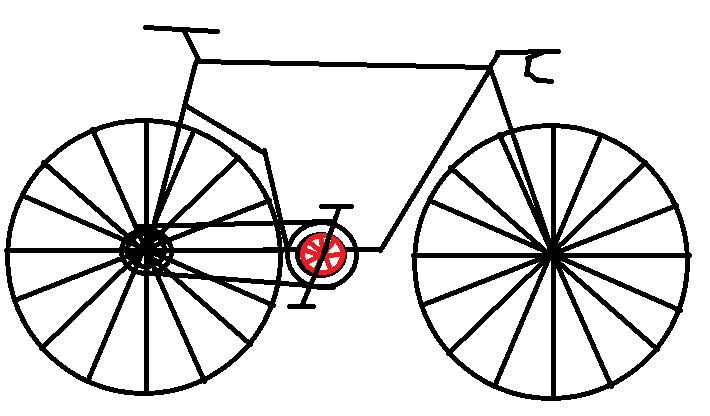


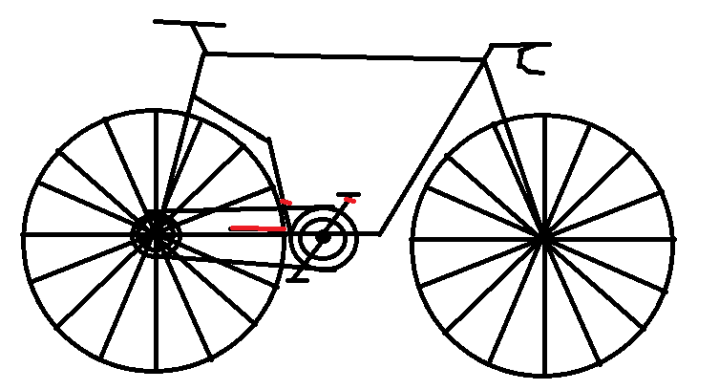
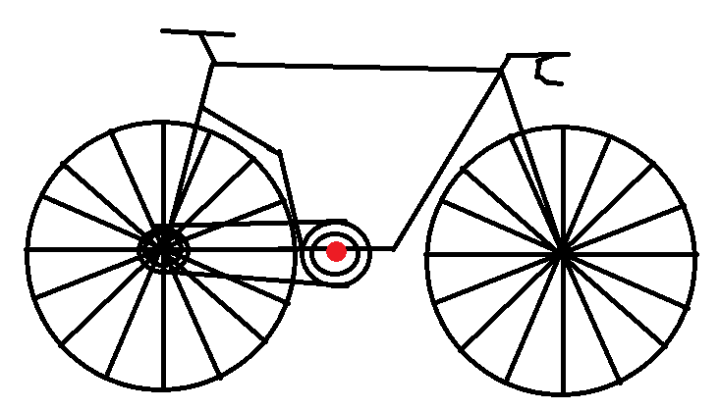
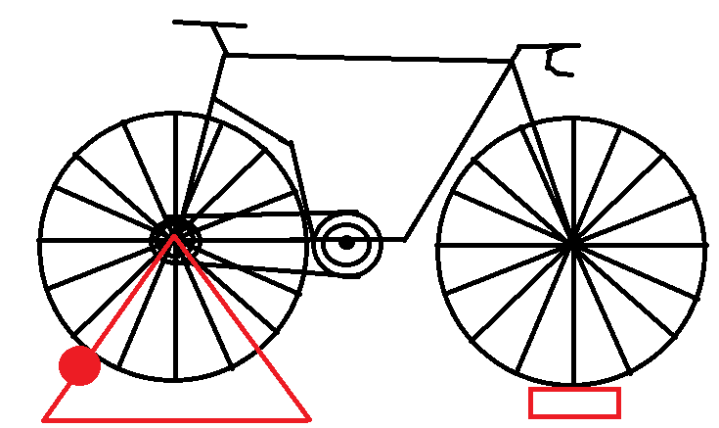




















Very nice job with this. I’ve had a Powertap for three years. The data gets move valuable each year as you compare the same races from year to year. It also works very well with Cyclingpeaks. That said, adding a race wheel gets VERY expensive.
Great watts and watt-related equipment primer Ray! I’ve been getting pretty interested in this aspect of modern cycling lately so I appreciate your coverage. It’s probably going to be a while before I can afford a PowerTap hub or CompuTrainer of my very own so in the meantime I’ll live vicariously through you and work on getting my own watts/kg number up by dropping some kgs!
Terrific explanation and review!
One other problem with using heart rate is the delay in the effect of the effort on your heart. Power is instant.
And your point about hard work is spot on. If you use a PM to just track power then you have a very expensive speedometer.
My husband has been talking about getting a PowerTap for his birthday next year. The funny thing is that he doesn’t even race but now that I have road bike with 700 wheels, I may be able to occasionally use it too!
Hey!
I’m 94 kilos and my FTP of 388 is not Bravado…I’m shocked you would think that :-)
Here is one thing that is not bravado, it takes me at least 400 watts to make it over any hill with a decent grade, ya see, I’ve got a HUGE caboose!
I’m somewhat tempted by the Tacx trainers to add some power metering to my life. Low end option has less stuff and is notably less expensive than Computrainer….
Wow, thanks for such a detailed post on power! I’ve always been curious about it but not willing to spend what it would take to play with it.
Thanks for a great overview. Since you’ve got a trainer in your list, don’t forget the ultimate poor-man’s power meter: the fluid trainer. Since the power-speed relationship is published, like this, knowing your speed means you know your power.
link to cycleopsproseries.com
Holding breath…
Turning blue…
link to metrigear.com
Interesting post. After reading about the iBike power meter, why can’t my Garmin Edge 500 with GSC10 Speed/Cadence sensor do the same thing to calculate power?
The Garmin and GSC 10 do not have the necessary sensors built into like the iBike Newton does.
Congrats on your fab site and all the valuable info to a Vet Team GB triathlete (always more to learn!)
I would love to find some software I can hook up with edge 500 head unit ,HRM and powermeter while on turbo to do all the FTP analysis/tests etc .
Maybe have it displayed on my Ipad mounted on your mic Stand !
I am sure you have got something rigged up already to monitor your cycle training progress so let us into some more secrets .ideally with a budget version as am sure Training peaks can be included if you can afford it .
Thanks for any advice
kenny
Hi Kenny-
You should definitely check out TrainerRoad then. That’ll allow you to display that on laptop in realtime (FTP), along with other metrics like HR, etc…
Almost all of my analysis is done with Training Peaks afterwards.
Hi, Do you use the WKO+ or the on line training Peaks to analysis your data?
TrainingPeaks.
Good post for beginners to introduce them to different types of power meters. You don’t necessarily get in to the specifics of why/how to train with a power meter is important. Also, how it could correlate to the different zones in which you train within. I really differ on the statement that ‘watts’ can only be measured on a bike. So untrue, anytime you generate power you are essentially generating ‘watts.’ A swimmer can easily convert their best 50 free time, convert it to time over distance (meters or yards) and this gives you your wattage. The same is true with running. A lot of sprint or HIT coaches will base their athletes performance during a given set, or goal, in the realm of wattage. Also, I’m looking at the last post which Paul asks you how to analyze your data and you reply TrainingPeaks. I think he was referring to how you analyze your data in performance realms and possibly stages of your season. As you know Training Peaks is simply an on-line tracker of your training.
I simply think instead of showing what a power meter shows, you should have focused on why they are important. Most of the people I race against train with their power meter and then take it off when they race, they say it inhibits them to certain parameters in racing situations. I personally train off perceived effort and power meters are turning more and more into strada ‘who’s is bigger’ training bragging rights.
I know this is an older article, but I was curious if you could elaborate on if the wattage data on the Wahoo is a good way to train toward watts?
Hey Ray, sorry to dig this up, but your bikes look phenomenal :)
Thanks for the helpful information about Power meters! Now that I bought one, I am trying to figure out how to gauge my fitness. After running for the past 30 years, about 2 years ago, upon reaching age 50,I started biking 3 days a week. now i am averaging 40 minutes a day X 5 per week.. Keeping my HR under 85% HRR for the whole 40 minutes (and below 80% HRR for the first 30 minutes,/ the most I can average is 178 Watts. As I am a 135 lbs Male, so my W/KG is about 2.9.
When I looked this up on cycling sites, most say that under 3.0 W/KG is “Unfit” and I am not even biking for an hour straight. How can this be? When I was once out of shape, my RHR was 62, now it is 48.
Nothing better than an old post to ask a question :-s
I looked around, and I didn’t find any article about it…
I don’t have money, I don’t have a power meter, I do have a free Strava account
Strava is somehow estimating my average power output, I read somewhere in one of DC review that that number is kind of OK as an overall average
What I was wondering is, does Strava knows if I’m drafting? does it make a difference in the Strava estimation? I rode 4 loops in a circuit, the firt loop alone, the other tree loops taking turns to lead the pack. Assuming I managed to keep the same speed, I should expect Strava to tell me my average wattage is higher in the first loop, but is not the case. so, what’s Strava assumption? I wasn’t drafting? I was drafting 70% all the time? I was drafting all the time?
Just a thought…
Good article… just a couple of things:
“Power is only really applicable to cycling – not running or swimming.”
While it might not be practical to *measure* the power that an athlete produces during these activities, power is still ‘applicable’ to them. They still produce x watts during the swim or run. Power is applicable to any activity or process that produces – or, more accurately, *transfers* – energy.
One other thing: power is not the same as energy. Power is the product of energy transferred *per unit time*.
– Energy is measured in joules (1 joule of energy is transferred when one newton of force is exerted over a distance of one metre). An object with a mass of about 0.1kg acts with 1 newton of force under earth’s gravity.
– Power is a measure of joules produced per second. 1 watt = 1 joule per second.